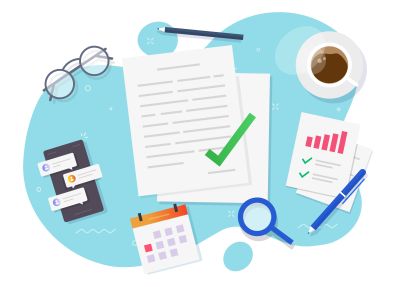Not sure how to run a website content audit? These steps will help guide you through the process, to check how well pages are performing, find out if content is up to date, and monitor the content lifecycle stage for each of your webpages.
Websites are full of content. Pages and pages of content. Keeping on top of all those pages and page elements, including features, messaging, links and media files, can be a big job. This is when a content audit is very useful.
Content audits are used to check how well your website is performing. You can schedule content audits for subject matter experts (SME) to review and make sure content is up to date. You can evaluate pages according to their stage in the content lifecycle so you know what pages to update, consolidate, or archive.
What steps are involved in running a website content audit?
1. List your content pages, page by page
Extract a list of all your webpages using a tool or your existing website sitemap. We have access to a range of tools that can help you to do this.
2. Detail your pages, to know what each page is about
Add your list of webpages or sitemap to the content audit template so that each page sits separately on a row.
Working down the list, visit each page to detail its key purpose.
Pay attention to the title and its location in the menu structure, what page is it related to, such as services or projects? Are there any special features, such as a contact form, live chat, map, text to talk, or translations? Ensure these features are captured in your audit.
If your audit contains many pages, it might be a good idea to work with an SME to review some of the pages in your list and divide and conquer what could be a significant task.

3. Categorise your pages
While visiting each page, take note of what type of page it is, eg: is it a home page or a hub page that directs users to other pages of the site? Or is it a standard content page, blog post, or a form? Try to keep your list of page categories short to help group your pages.
4. Analyse your pages
Ask yourself:
• Is the content up to date and still relevant?
• When was the page last updated?
• Is the page meeting its goals? What are the visitor numbers, bounce rate and time on page stats? If possible, add in the traffic numbers from your analytics tool for each of your pages. This will help you work out what pages are the most active and where to focus your attention first.
Links and media audit
As you do your content audit, consider the links and media used on those pages.
1. Whatinternal and external links does each page point to? Most importantly, do they work?
2. What image, video, PDF, audio or other media files are in use? Do you have the original? Is it web optimised so the file size isn’t too large? Does it have all of its required meta data?
3. If there are any PDFs, are they in an accessible format or do you have the original so they can be made accessible? Find out more on the Digital NSW digital service toolkit.
4. If there are any videos, are there captions or a transcript available to support it?

The results
Your audit will help you determine what you need to do to optimise your content. You ultimately want to score a grade for each page with:
A+ pages – relevant, up to date, with strong analytics stats. These pages should be used as examples of what good content looks like.
B grade pages – relevant, but may need improvement such as internal links to boost visits to the page.
C grade pages – in need of an overhaul. Perhaps these pages don’t get many visits or have outdated content that needs some SME attention.
F grade pages – outdated and underperforming. The content on these pages could be consolidated on to other existing pages or archived.
Be sure to note what steps are required during or after your audit.
You can use our template to help you get started.
Content audits, if done properly, take time. You need to commit to the task to get the most out of the exercise. Block out time in your calendar, recruit the help of your SMEs and spend the time exploring your website.
The digital customer experience on your website will be better for it.
When was the last time you ran a content audit and what tools did you use to do it?
For further tips and guidance, including how to assess the quality of your content and whether it's fit for purpose, see the content audit page, in the Digital Service Toolkit.
Still have questions?
The OneCX program team will support and guide Agency stakeholders through this process as part of the overall website migration journey.
Want to know more about the OneCX program? Subscribe to our newsletter for the latest news and updates.